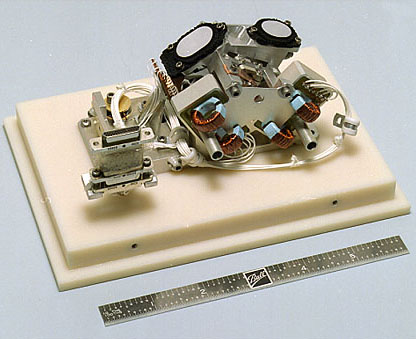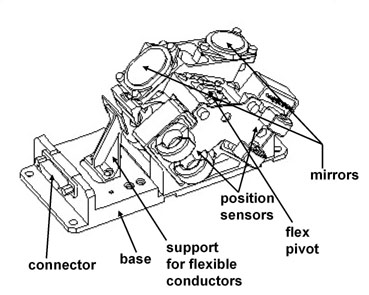A key element of the optics is the scan mirror. Its primary function is to allow us to modulate the signal on and off the germanium arrays, so we can avoid some of the problems these detectors have with long time constants in their response. However, the device also implements efficient observing modes because we can move the images on the arrays in various fashions without moving the spacecraft and waiting for it to settle.
| The scan mirror is shown in the picture at the left and its major components are identified in the drawing to the right. It is based on the scan mirror in the Short Wavelength Spectrometer (SWS) on the Infrared Space Observatory (ISO). The SWS team shared this design with us, and Ball Aerospace made modifications to adapt it to MIPS. | |
 |

|
The mirror pivots on flexures, and is driven by a slightly bent "linear" motor. We have wound the motor with wire that carries superconducting fibers in copper, so the mirror can be operated at room temperature but so its power requirements are minimal at 2K. We have also installed differential impedance transformer position sensors (DITs). Both of these changes were made to minimize power dissipation and hence to keep the temperature of the mirror low enough during operation that there was no potential for it to emit in our 160 micron channel. For extra details (if you haven't had enough) and an up-to-date report check out this paper.
 |
 |
|